
In-Depth | What pushed Pakistan to the brink of economic collapse & why it concerns India

In-Depth | What pushed Pakistan to the brink of economic collapse & why it concerns India
Pakistan, described by the World Bank as south Asia's "weakest economy," has been battling skyrocketing inflation over the past few quarters. What adds to the country's woes is the depleting forex reserves, which have nose-dived to an all-time low of $3.1 billion per the official data shared on January 28. Alarm bells rang loud in Islamabad as the forex reserves would be able to sustain imports for only two to three weeks.
On the other hand, inflation has doubled on-year to 24.5 percent, as per the numbers released for December 2022. Food prices have soared the most, with inflation in this category climbing 35 percent.
As desperate times call for desperate measures, the State Bank of Pakistan (SBP), the country's central bank, raised the key lending rate by 100 basis points to a 24-year high of 17 percent, on January 23.
Subsequently, the unofficial cap on USD-PKR (Pakistani Rupee) exchange rate was also removed, as part of the conditions laid down by the International Monetary Fund (IMF) for extending aid. As a result, the local currency slipped to a 20-year low on January 27, at Rs 262 against the Dollar.
IMF's $1.1 billion aid — part of the $6 billion bailout package announced last year — will be crucial for Pakistan to avoid complete economic collapse. On January 27, the fund said its team would be visiting the country next week to hold talks with the government.
Here's a look at what pushed Pakistan to this stage, what lies ahead, and whether it concerns India.
 Pakistani Rupee (PKR) crashed to its 20-year-low on Jan 27, 2023 (File image: Reuters)
Pakistani Rupee (PKR) crashed to its 20-year-low on Jan 27, 2023 (File image: Reuters)
Fiscal imprudence
Running a political economy that is dependent on aid and grants from strategic allies and multilateral bodies has affected Pakistan's fiscal health, say experts. Successive governments have been accused of making little effort towards widening the tax net and multiplying the sources of revenue.
In addition, the heavily-subsidised electricity bills, and one of the lowest retail petrol and diesel rates in south Asia, ended up hurting the Pakistani economy in the long-run.
Data from the past two decades show that the fiscal deficit was as low as $2.25 billion in 2004, and climbed to an all-time high of $25.31 billion in 2019.
"Expenses kept on increasing, while we were not able to increase revenues and widen the tax net. As a result, the fiscal deficit kept on widening. The revenue being raised is largely used for opex (operating expenses), such as providing salaries and discharging other governmental duties, and not for infrastructure development," said Ammar Habib Khan, Chief Risk Officer at Karandaaz Pakistan, a not-for-profit company promoting access to finance for SMEs, while speaking to Moneycontrol.
"Our tax-to-GDP ratio is fairly low," he pointed out. The ratio stood at 9.2 percent in FY22, whereas it was 17.1 percent in neighbouring India during the same time.
The result of the widening fiscal deficit was that Pakistan ended up becoming more reliant on loans from its all-weather ally China, and friendly Gulf countries like Saudi Arabia and the United Arab Emirates, to keep its economy afloat.
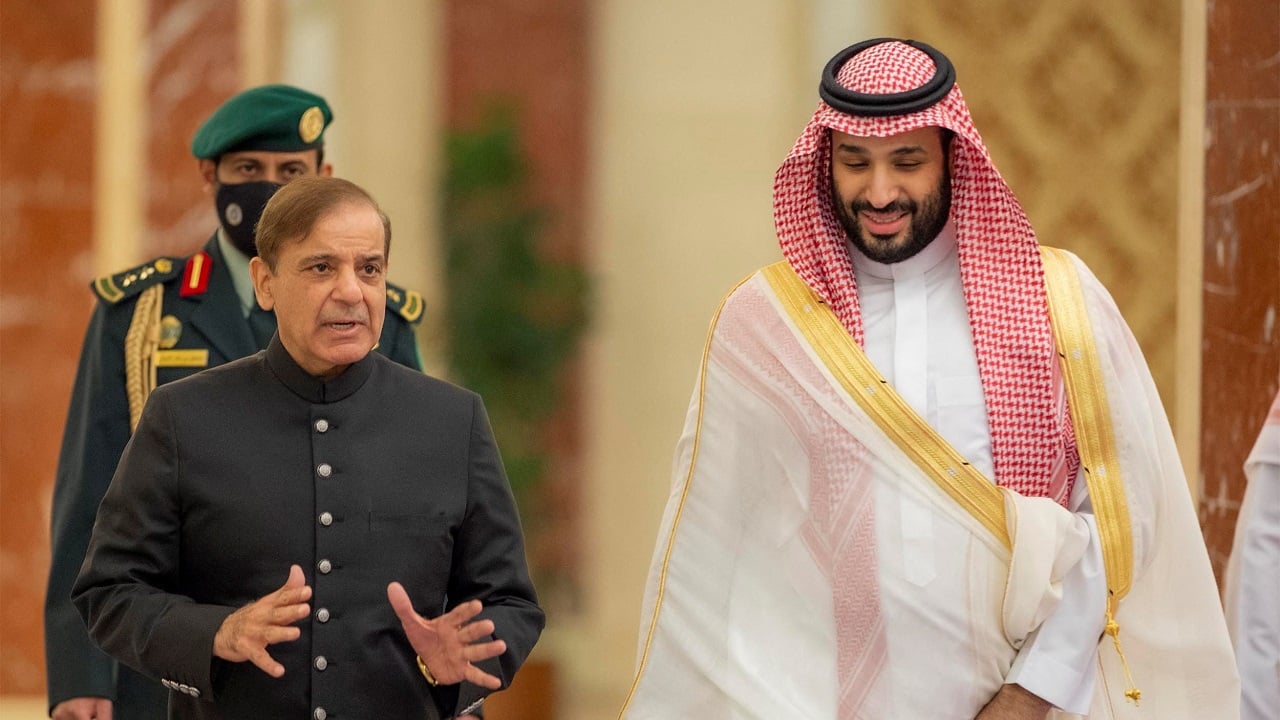 Saudi Crown Prince Mohammed bin Salman (right) seen with Pakistan Prime Minister Shehbaz Sharif in this file photo. Saudi Arabia extended a $3 billion deposit term to Pakistan in Dec 2022 (Image: Reuters)
Saudi Crown Prince Mohammed bin Salman (right) seen with Pakistan Prime Minister Shehbaz Sharif in this file photo. Saudi Arabia extended a $3 billion deposit term to Pakistan in Dec 2022 (Image: Reuters)
The lack of fiscal prudence was the key reason behind the IMF delaying the release of $1.1 billion to Pakistan, which was due last November. The global monetary body has asked Islamabad to introduce austerity measures, beginning with an increase in energy costs, a jump in taxation rates, and a hike in the key lending rates.
Prime Minister Shehbaz Sharif has vowed to enact "tough and bitter measures" that are necessary for further assistance from the IMF. The country needs $20 billion over the next 12 months to make payments arising from debt obligations, according to SBP.
Blame on Imran Khan
A number of analysts, along with the incumbent Shehbaz Sharif-led regime, has blamed the previous Pakistan Tehreek-e-Insaf (PTI) government headed by Imran Khan for the worsening of the country's financial health.
Khan's economic mismanagement led to "acute financial crisis, inflation, unbridled Dollar flight, ample foreign and local debts," Finance Minister Ishaq Dar told reporters in Islamabad on January 28.
Fiscal deficit had shot to a record high of $25.31 billion in 2019, a year after the ex-cricketer-turned-politician rode to power, and relatively moderated to $21.36 billion in 2020, and $21.26 billion in 2021.
Inflation averaged at 3.93 percent in FY18, ahead of Khan being elected the Prime Minister. A year later, in FY19, it rose to 10.58 percent, followed by 9.74 percent in FY20, 9.5 percent in FY21, and 12.2 percent in FY22.
One of Khan's most criticised moves was the delay in approaching the IMF, despite economists recommending back in 2018 that the government should seek a bailout package. Pakistan eventually sought a bailout package in May 2019, almost a year after maintaining that they would shun the practice of approaching the fund with a "begging bowl."
 Imran Khan resigned in April last year, after over a dozen lawmakers from his party switched to the rival camp (Image: Reuters)
Imran Khan resigned in April last year, after over a dozen lawmakers from his party switched to the rival camp (Image: Reuters)
The welfare schemes rolled out by Khan had also raised eyebrows as the state was not considered to be fiscally strong enough to bear them.
The PTI government's reluctance to increase fuel costs, even in early 2022 when international crude rates had breached the $100-mark on account of the Russia-Ukraine war, also drew flak from experts.
"Imran Khan's government went on a spending spree post-Covid. They did not increase the interest rate, which led to a lot of cash sloshing about in the economy. This, in turn, led to higher demand and more inflation. They also gave a massive subsidy on fuel in the first three months of 2022, which cost around Rs 300 billion," Ammar Khan pointed out.
However, the bulk of Khan's tenure was marked by the Covid pandemic, which had compelled the government to increase expenditure to provide essentials to the vulnerable sections of the population. The Ehsaas Programme, one of his flagship projects, was lauded by the World Bank for providing emergency cash aid to the poor and daily-wage earners during the lockdown.
"Although the delay in approaching the IMF and the cap on fuel prices at the time of the change in government (in April 2022, when Khan resigned and Sharif took over) may have aggravated the situation, programmes such as Ehsaas are much needed and do help with poverty alleviation," said Dr Aadil Nakhoda, Member, Economic Advisory Group, at the Islamabad-based think-tank Prime Institute.
The current crisis is a result of both "the delay in approaching the IMF and the mismanagement of the economy,’’ he added. However, Khan’s government cannot be solely blamed for the mismanagement.
"The ‘mismanagement’ has always been present in the economy as the budgetary and the current account deficits have both soared, particularly in years when Pakistan has achieved relatively higher rates of economic growth. The inability to reduce the twin deficits led to the crisis," Nakhoda stressed.
Devastating floods
The catastrophic floods that hit Pakistan during the last monsoons , between July and September, also hammered the country's struggling economy.
Apart from claiming 1,739 lives, the floods damaged infrastructure to the tune of $40 billion, per an estimate shared by the World Bank in October.
The floods wiped out more than 8 million acres of crops and displaced 33 million people. The worst-affected region was the country's south and southwest, including most parts of Sindh province, and areas of Punjab and Balochistan.
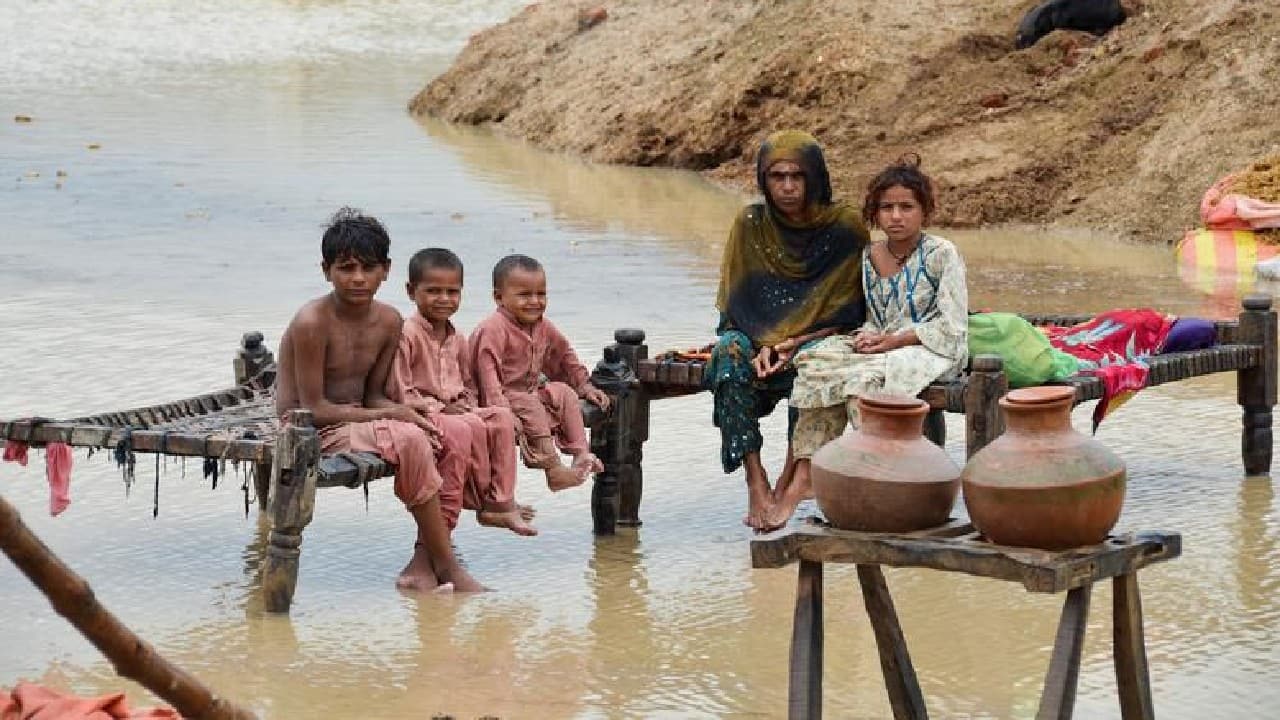 According to UNICEF, an estimated 4 million children were still living near contaminated flood waters as of mid-January 2023 (File image: Reuters)
According to UNICEF, an estimated 4 million children were still living near contaminated flood waters as of mid-January 2023 (File image: Reuters)
In the Sindh region, the floods caused a near total wipeout of crops such as banana, wheat, dates, and onion, which form part of the staple diet of Pakistanis. As a result, the country was forced to import food items which it would not have otherwise, analysts pointed out.
"The floods also led to the displacement of workers and destruction of infrastructure in flood-hit areas. The efforts of policymakers have shifted towards rehabilitation and reconstruction, when focus should be more on poverty alleviation and reducing the impact of the economic crisis," Nakhoda said.
At an international donors’ conference in Geneva last week, Sharif succeeded in securing a cumulative aid of $10 billion, mostly in the form of loans.
Sri Lanka-like crisis?
In mid-2022, Sri Lanka witnessed a complete collapse of its economy, with the country running out of foreign reserves. As a result, imports came to a halt, depriving locals of essential commodities. In the massive agitation that followed, the country's president, Gotabaya Rajapaksa, was forced to resign and flee.
Is Pakistan staring at a similar crisis? While there are similarities, experts say Islamabad is better positioned to avert a sovereign default.
The Lankan government had approached the IMF in April 2022, after the foreign reserves had dropped as low as $1.8 billion. On the other hand, Islamabad has been engaging with the fund since 2019, and had secured a $6 billion bailout last year.
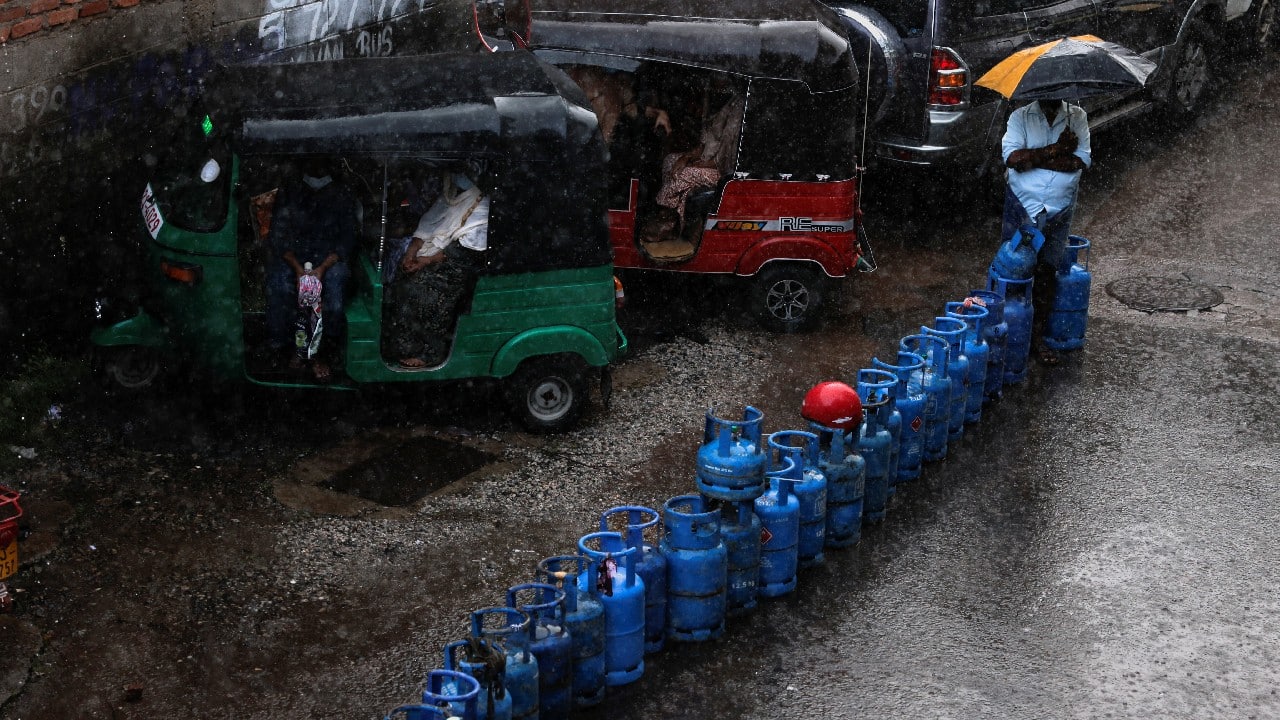 Sri Lanka ran out of fuel, including cooking gas, after its foreign reserves turned dry in May 2022 (Image: Reuters)
Sri Lanka ran out of fuel, including cooking gas, after its foreign reserves turned dry in May 2022 (Image: Reuters)
"Pakistan is not looking at a Sri Lanka-like crisis. It was never looking at it, although people have begun comparing. In Sri Lanka's case, around 50 percent of its external debt was owed to private creditors or private bond holders. In the case of Pakistan, only 8 percent is owed to private creditors or private bond holders. The next private debt payment of Pakistan is due in April 2024," Ammar Khan said.
"The payment for some bilateral loans from friendly countries like Saudi Arabia, the UAE, and China will be due in the next few months, but they will be rolled over. Similarly, multilateral loans would also be rolled over. The restructuring is necessitated only in cases of private debt payment. So, we won't really have a Sri Lanka-like crisis," the Islamabad-based economist claimed.
The crisis in Pakistan is said to have intensified over the recent weeks due to the delay in IMF's release of the $1.1 billion tranche, as the fund was not satisfied with the fiscal tightening measures adopted by the Pakistani government.
With the cap on energy prices and exchange rates removed, and lending rates hiked, the IMF is likely to be satisfied with the government's efforts and enhance its engagement, analysts noted.
IMF's nod to Islamabad's fiscal prudence measures will pave the way for more bilateral assistance, the Express Tribune reported. This includes loans of $3 billion each announced by the UAE and Saudi Arabia.
China, Pakistan's strongest regional ally, is also its largest lender at $30 billion, which accounts for a third of its total foreign debt. The country is expected to roll over the bulk of its debt in view of the crisis, analysts added.
"Pakistan has strategic friends like China and Saudi Arabia who did not allow a Sri Lanka-type situation to occur here. Pakistan was able to import the bare minimum, which Sri Lanka could not," said Raja Gopal Chakraborti, Professor, Department of South & Southeast Asian Studies, Calcutta University.
 A Pakistani policeman keeps watch near a Pakistan-China friendship billboard in Islamabad (File image: Reuters)
A Pakistani policeman keeps watch near a Pakistan-China friendship billboard in Islamabad (File image: Reuters)
Concern for India?
India has not reacted to Pakistan's economic crisis so far. Asked about India's standpoint on current developments in Pakistan, the country's Foreign Minister, S Jaishankar, said on January 28 that it would not be appropriate for him to comment about the happenings in Pakistan.
A week earlier, Shehbaz Sharif had reached out to India for economic cooperation, saying that wars between the two countries over the past seven decades had only resulted in economic hardship.
The softening in Islamabad's approach, which has so far placed Kashmir at the centre of potential talks with India, is seen through the prism of its economic challenges.
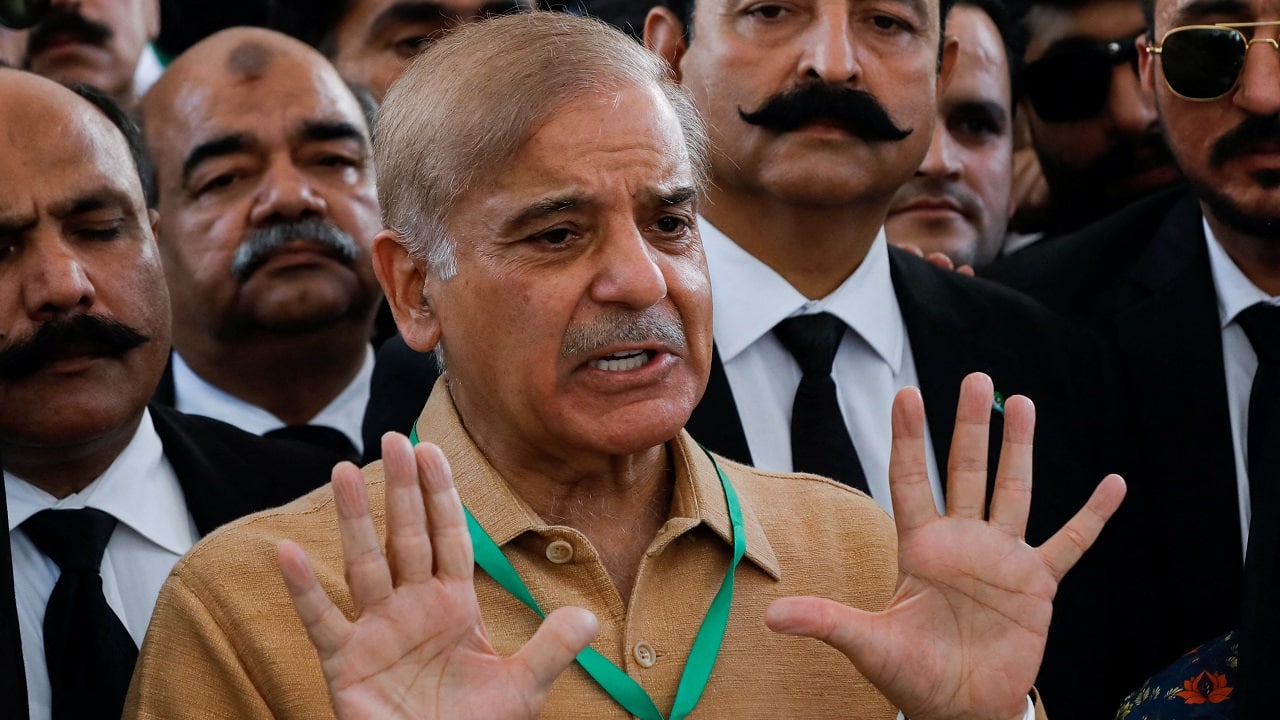 Shehbaz Sharif, the younger brother of former Pakistan premier Nawaz Sharif, took over as the PM in April 2022 (Image: Reuters)
Shehbaz Sharif, the younger brother of former Pakistan premier Nawaz Sharif, took over as the PM in April 2022 (Image: Reuters)
"While India will certainly respond to a humanitarian call for food and medicine, economic instability in Pakistan would mean that the country would have fewer resources to wage proxy wars against India," Chakraborti said.
However, a section of analysts in India see Pakistan's crumbling economy as a matter of grave concern and feel the situation may have strategic and security implications.
"If the Pakistani economy tanks completely, there is a possibility that India will have to face a refugee influx. And if Pakistan turns into a failed state, there is a possibility that terror networks will increase their influence within Pakistan, and that has the potential to directly harm India's interests," Sourish Ghosh, an independent researcher, told Moneycontrol.
"With both Sri Lanka and Pakistan going through an economic crisis, SAARC will lose its significance and China will become the ringmaster if it bails out Pakistan," Ghosh added.
Path ahead for Pakistan
In order to recover from its economic distress, one of the foremost tasks before Pakistan is to increase business confidence, said Nakhoda, who is also the Assistant Professor of Economics at the Karachi-based Institute of Business Administration (IBA).
"Pakistan is in need of external financing and any delay increases the risk of additional administrative measures that curtail the outflow of Dollars. Measures such as restrictions on the opening of LCs (letters of credit) and reduction in business hours hurt business confidence. The way forward must include improvement in the business environment," he added.
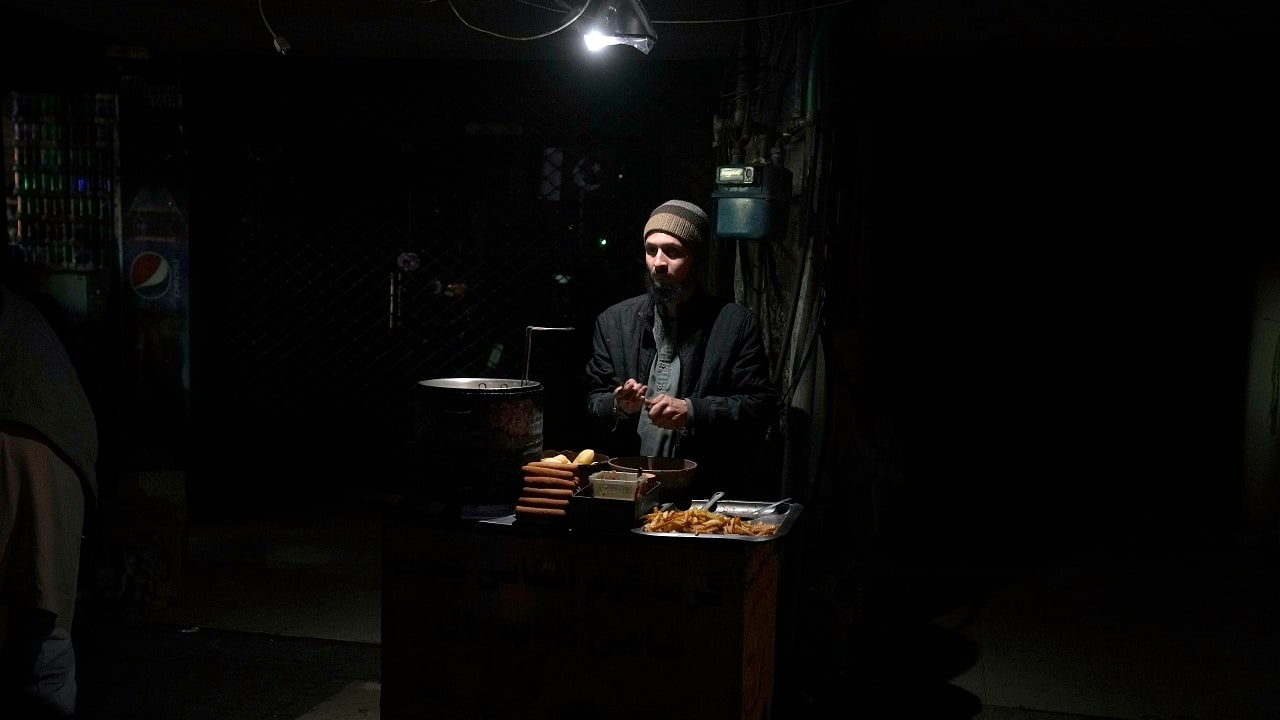 Much of Pakistan was left without power on Jan 23 as an energy-saving measure by the government backfired. The outage spread panic and raised questions about the cash-strapped government's handling of the country's economic crisis. (Image: AP)
Much of Pakistan was left without power on Jan 23 as an energy-saving measure by the government backfired. The outage spread panic and raised questions about the cash-strapped government's handling of the country's economic crisis. (Image: AP)
Experts also believe that Pakistan needs to adopt a two-pronged strategy, focusing on short-term goals aimed at reducing external debt, and medium-to-long-term goals aimed at restructuring the economy.
"In the short term, we need to close the IMF programme as soon as possible, and get sufficient funds from friendly countries like Saudi Arabia, China, and the UAE to sustain the economy. In the medium term, we need to restructure the energy sector, reduce cash in circulation, and bring more sectors into the tax net. Once we do it, Pakistan will be in a more stable position," Ammar Khan said. The cash in circulation in Pakistan is 20 percent of its GDP, as per official estimates, which is way higher than most other middle- and high-income economies.
Reducing dependency on oil by developing strong public transport infrastructure, deregulating fuel prices and facilitating the growth of export-oriented industries are some of the measures that can improve Pakistan's financial condition, experts point out. The question, however, remains whether Islamabad has the political will to implement sweeping reforms.